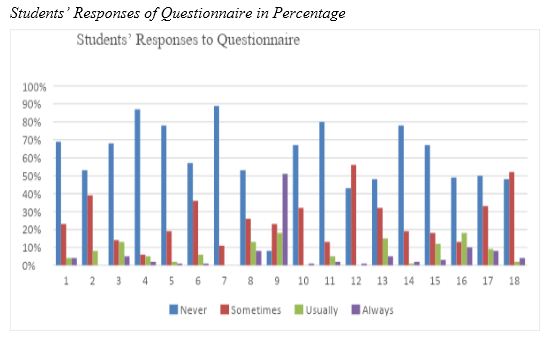From Banking Model to Critical Pedagogy
Challenges and Constraints in the University Classrooms
Abstract
 Abstract Views: 2400
Abstract Views: 2400
Critical pedagogy, contrary to the banking concept of education, seeks to empower learners to think critically to transform their living conditions. This mixed-methods case study aims at exploring the actual teaching practices of the university teachers in order to demystify the challenges and constraints impeding the implementation of critical pedagogy in the universities of Punjab, Pakistan. Women University in Multan was the selected case and exploratory sequential design the method selected for this study. The researchers personally collected data using a small-scale survey with 100 students using cluster sampling, and in-depth interviews with ten teachers purposively selected from various departments of the university, ensuring equal representation. The study concluded that large class size, lack of needed resources and trained personnel, lengthy and fixed syllabus, and lack of student interest and motivation were the reasons for continuing with the 'banking method.' Based on the findings, the researchers recommend that for the critical pedagogy to take root in Pakistan, the teachers and students should be cognizant of the utility of critical pedagogy, and adequate resources must supplant the teaching and learning environment to enjoy best outcomes.
Downloads
References
Alam, M. M. (2013). Banking model of education in teacher-centered class: A critical assessment. Research on Humanities and Social Sciences, 3(15), 27–31.
Arif, S. (2011). Transcendence model of human intellectual evolution. Transcendental Philosophy, 12, 223–252.
Ayoub, M. D., Khoshnood, A., & Babaei, A. (2014). Paulo Freire’s critical pedagogy and its implications in curriculum planning. Journal of Education and Practice, 5(14), 86–91.
Bassey, M. (1999). Case study research in educational settings. The Open University Press.
Chin, C., & Osborne, J. (2008). Students' questions: A potential resource for teaching and learning science. Studies in Science Education, 44(1), 1–39.
Emenyeonu, C. (2012). Student-centered learning in Oman: Challenges and pitfalls. International Journal of Learning and Development, 2(5), 243–254. doi:10.5296/ijld.v2i5.2549
Freire, P. (2001). Pedagogy of freedom: Ethics, democracy, and civic courage. Rowman and Littlefield.
Freire, P. (2005). Pedagogy of the Oppressed (30th anniversary ed. Trans. by Myra Bergman Ramos with an Introduction by Donaldo Macedo).The Continuum International Publishing.
Freire, P. (2016). Pedagogy of the oppressed. Bloomsbury.
Giroux, H. A. (1997). Pedagogy and the politics of hope theory, culture, and schooling: A critical reader. Westview press.
Hooks, B. (1994). Teaching to transgress: Education as the practice of freedom. Routledge.
Jabbour, K. K. (2013). Issues that restrain teachers from adapting student-centered instruction in Lebanese school. Tejuelo, 17(1), 85–96.
Kareepadath, V. P. (2018). Critical pedagogy in practice: A case study from Kerala, India. Journal of Pedagogy, 9(2), 33–54.
Katz, L. (2014). Teachers’ reflections on critical pedagogy in the classroom. Inter Actions: UCLA Journal of Education and Information Studies, 10(2), 1–19.
Kaya, C., & Kaya, S. (2017). Perspective teachers’ education belief and their views about the principles of critical pedagogy. Journal of Education and Learning, 6(4), 181–190.
Krippendorff, K. (2018). Content analysis: An introduction to its methodology. Sage publications.
Kvale, S., & Brinkmann, S. (2009). Interviews: Learning the craft of qualitative research interviewing. Sage publications.
Larseen, D. –F., & Andreson, M. (2011). Techniques and principles in language teaching. Oxford University Press.
Mahmoodarabi, M. & Khodabakhs, M. R. (2015). Critical pedagogy: EFL teachers’ views, experience and academic degrees. Islamic Azad University, Sanandaj, Iran. English Language Teaching, 8(6), 100–110. doi:10.5539/elt.v8n6p100
Motlhaka, H. A. (2016). Paulo Freire’s critical pedagogy in the classroom: Promotion of critical thinking in South African English First Additional Language (FAL) students. International Journal of Educational Sciences, 13(1), 65–71.
Nouri, A., & Sajjadi, S. M. (2014). Emancipatory pedagogy in practice: Aims, principles and curriculum orientation. International Journal of Critical Pedagogy, 5(2), 76–87.
OECD. (2013). Teaching and Learning International Survey (TALIS). Author. Retrieved from https://www.oecd.org/edu/school/43081350.pdf
Ooiwa-Yoshizawa, A. (2018). Implications of EFL critical pedagogy: Theory, practice and possibility. Learning, 19, 245–253.
Rafiee, M., & Keihaniyan, M. (2014). “Say you want a revolution": A call for participatory approach in EFL educational system. Advances in Language and Literary Studies, 5(1), 112–116.
Saleh, S. E. (2013). Paulo Freire’s philosophy on contemporary education. ELT Journal, 1, 15.
Sarroub, L. K., & Quadros, S. (2015). Critical pedagogy in classroom discourse. In Martha Bigelow & Johanna Ennser-Kananen (Eds.), The Routledge handbook of educational linguistics (pp. 252–260). Routledge.
Seidel, J. & Kelle, U. (1995). Different functions of coding in the analysis of textual data. In U. Kelle (Ed.), Computer-aided qualitative data analysis: Theory, methods and practice. Sage.
Shih, Y. H. (2018). Some critical thinking on Paulo Freire's critical pedagogy and its educational implications. International Education Studies, 11(9), 64–70.
Shokouhi, M., & Pashaie, F. (2015). Critical pedagogy and its realization in classroom context. Journal of Applied Linguistics and Language Research, 2(3), 204–210.
Sharif Uddin, M. (2019). Critical pedagogy and its implication in the classroom. Journal of Underrepresented and Minority Progress, 2, 109–119.
Shor, I. (1996). When students have power? Negotiating authority in a critical pedagogy. University of Chicago Press.
Sultan, S. (2015). Reinterpreting Freire's essay on the banking model of education by using Tyler's model of curriculum. Journal of Social Sciences and Humanities, 7, 27–38.
Yin, R. K. (2014). Case study research: Design and methods (applied social research methods). Sage publications.


This work is licensed under a Creative Commons Attribution 4.0 International License.
UER follows an open-access publishing policy and full text of all published articles is available free, immediately upon publication of an issue. The journal’s contents are published and distributed under the terms of the Creative Commons Attribution 4.0 International (CC-BY 4.0) license. Thus, the work submitted to the journal implies that it is original, unpublished work of the authors (neither published previously nor accepted/under consideration for publication elsewhere). On acceptance of a manuscript for publication, a corresponding author on the behalf of all co-authors of the manuscript will sign and submit a completed Copyright and Author Consent Form.
Copyright (c) The Authors









